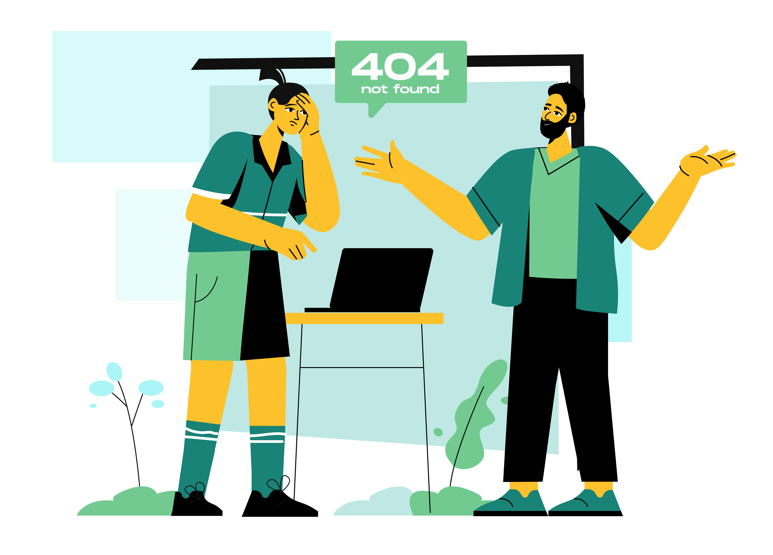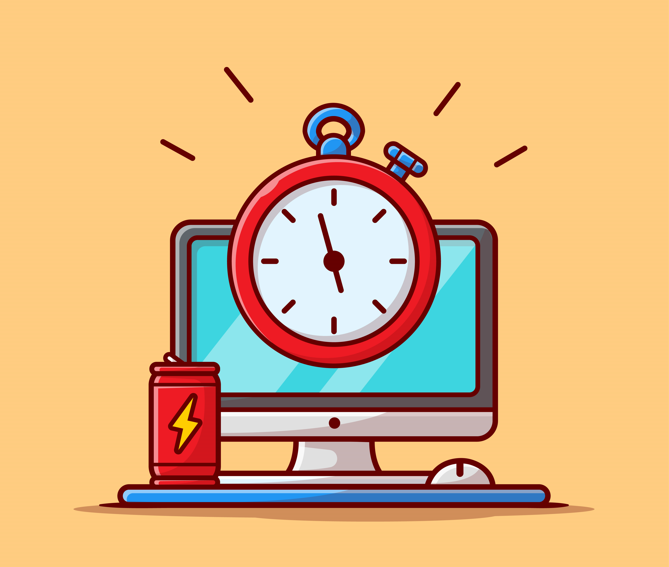Let’s tackle an important question for any business with a website – how often should you redesign it?
I know figuring out website redesign timing and frequency can be tricky. Do you overhaul it every year? Every 3 years? 5 years? Never?
This beginner’s guide will break it down step-by-step so you can optimize your website redesign and refresh approach.
We’ll cover:
- Benefits of redesigning
- Signs your site needs a refresh
- Types of redesigns
- Costs
- Redesign process and timeline
- And much more!
By the end, you’ll have a clear blueprint for determining when and how to give your business website redesigns to keep it looking sharp. Let’s get to it!
- What are the Benefits of a Website Redesign?
- How Many Years Is a Business Website Good For?
- How Do You Know If Your Website Needs a Redesign?
- Why You Need to Redesign Your Website Constantly
- How Long Should a Website Redesign Take?
- How Often Should You Add New Website Content?
- Types of Website Redesigns
- How Much Does a Website Redesign Cost?
- Business Website Redesign Checklist
- Business Website Redesign Stats You Should Know About
- Key Takeaways on Business Website Redesigns
What are the Benefits of a Website Redesign?
First, why should you bother redesigning your website periodically in the first place? What benefits does it offer?
Here are some of the biggest perks:
1. Increased conversions and sales
A website redesign gives you the chance to optimize pages and features for better conversions. Even minor tweaks can increase sales.
2. Improved user experience
You can enhance the user experience by improving design, content, navigation, and layout during a redesign. This boosts engagement.
3. Fresher brand image
Redesigns allow you to update branding elements like colors, fonts, imagery, and language to keep feeling current.
4. Better mobile optimization
Redesigns let you adapt the site to leverage new mobile trends, behaviors, and capabilities as they emerge.
5. Higher performance
Redesigns offer opportunities to optimize web performance for faster load times. This improves SEO and user experience.
6. Enhanced features
Adding new features and functionality during a redesign helps you stand out from competitors.
7. Lower maintenance
Redesigning with modern technology stacks can reduce maintenance overhead and costs.
8. Improved accessibility
You can use redesigns as a chance to audit and improve website accessibility for those with disabilities.
9. SEO benefits
Carefully planned site architecture changes can enhance organic rankings and search visibility.
Redesigns require an investment but it pays dividends across many areas as shown above. The key is determining optimal timing…
How Many Years Is a Business Website Good For?
So how long can you actually go before needing to redesign your business website? What’s the shelf life?
While there is no set expiration date, here are some general website lifespan guidelines:
- 1-2 years – Cosmetic “facelift” with visual refresh
- 2-3 years – Minor enhancements and feature upgrades
- 3-4 years – More robust redesign of layouts and infrastructure
- 5+ years – Complete new site rebuild from scratch
Websites for fast-changing businesses like tech startups may aim for redesigns every 1-2 years.
Other organizations redesign every 4-5 on average. Many consultants recommend 3 years as a “sweet spot”.
The lifespan depends on your business needs, goals, audience, and how quickly your industry evolves. Set expectations with leadership and stakeholders that periodic redesigns will be essential.
Now let’s cover how to identify signs your website needs a refresh…
How Do You Know If Your Website Needs a Redesign?
Your website won’t suddenly stop functioning after a specific timeframe. Redesigns should be driven by business needs and goals.
Here are signs it may be time for your business website to get refreshed:
- Traffic and conversions dropping – Lower engagement and sales suggest needed updates.
- High bounce rates – If analytics show high bounce rates, poor UX may be to blame.
- Negative feedback – Complaints about confusing navigation or design.
- Brand evolution – Your colors, logo, and messaging changed and the site feels outdated.
- New innovations – Competitors are using features your site lacks.
- Shift in audience – User demographics and preferences changed over time.
- Poor mobile performance – Slow speeds or mobile UX issues are spotted.
- Accessibility flaws – Code audits uncover ADA and WCAG compliance failures.
- Security vulnerabilities – Old software needs patching for safety.
- SEO issues – Problems like low rankings, thin content, or site errors.
- Back-end headaches – Difficulty adding new features due to outdated infrastructure.
Be proactive about identifying the symptoms above before your site falls too far behind competitors and audience expectations.
Why You Need to Redesign Your Website Constantly
Many businesses question whether website redesigns are really necessary if things seem “fine enough”.
Why fix what’s not super broken, right?
Here are key reasons why periodic redesigns and refreshes are crucial:
Your competition doesn’t stand still – Others will redesign with cooler features and better UX. You’ll fall behind if you don’t keep up.
User expectations rise – Visitors expect more visual polish, better mobile experience, and functionality over time.
Search engines demand optimization – Google’s indexing and ranking algorithms change. Redesigns help stay optimized.
Your brand evolves – Messaging, imagery, and personality change over time. Your site should align.
New technologies and capabilities emerge – Take advantage of innovations via redesigns. Don’t get left in the past.
Passive damage accrues – Without proactive upkeep, incremental issues creep up on old sites.
Think of your website like a car. While it may run fine for a while without service, it will deteriorate faster without periodic maintenance and repairs.
The same principle applies to websites. Redesign “tune-ups” and overhauls are required to keep your business website running smoothly.
How Long Should a Website Redesign Take?
If you’ve decided it’s time for a website redesign, what’s the typical redesign timeline? How long should it take?
For major redesigns, the full process often spans 1-4 months:
Planning: 1-2 weeks
Stakeholder interviews, gather requirements, inventory content, and create goals.
Design: 2-4 weeks
Conceptualize layouts, wireframes, visuals, and prototypes.
Development: 2-4 weeks
Build new pages, integrate functionality, migrate content, and test.
Launch: 1-2 weeks
Final testing, fixing bugs, deploying new site, redirects, QA.
Follow-up: Ongoing
Post-launch updates, gathering feedback, and iterating additional improvements.
The specific timeline depends on the scale of changes, if migrations are needed, the complexity of integrations, and the types of new functionality.
Building a completely new website from scratch takes more calendar time than a minor “facelift” redesign.
Work with your web design agency partner to create an optimal roadmap based on unique project needs and constraints.
How Often Should You Add New Website Content?
Beyond visual design facelifts, you should also update website content regularly between full redesigns.
Fresh content keeps visitors engaged, improves SEO, and ensures information stays current. Ideal content cadence:
Blogs: 1-3X per week
For publications, small businesses, content-heavy sites.
Articles: 1-2X per month
Longer tutorials and thought leadership content.
Pages: Quarterly
Review key pages like About, Services, etc., and update as needed.
Site-wide: Every 6 months
Audit all content on a bi-annual basis. Freshen stale or outdated info.
Trending topics: Ongoing
Add content about “hot” topics and link to related resources.
Think about recruiting volunteer “guest bloggers” from different departments to make content additions scalable.
Providing new content steadily between redesigns keeps your website lively.
Types of Website Redesigns
Now that we’ve covered timing, let’s discuss the 3 main types of website redesigns:
1. Site-wide Redecoration
This cosmetic facelift updates the visual design across the entire site:
- New color palette
- Updated logo
- Fresh imagery and illustrations
- Improved typography
- Content layout changes
Media assets, fonts, and styles get refreshed but core pages remain the same.
2. Re-wiring
This type of redesign focuses on infrastructure and backend:
- New web platform or CMS (WordPress, Shopify, etc.)
- Improved hosting tech stack
- Integration of new APIs or databases
- Enhanced security features
- Transition to modern frameworks
The front end may change little, but you modernize behind-the-scenes tech.
3. Complete Site Remodel
As the name suggests, this overhaul transforms both visual design and back-end:
- New information architecture
- Easier navigation structures
- Improved page layouts and content
- New visual brand identity
- Modern front-end and back-end tech
- Additional features and integrations
You recreate the full user experience top-to-bottom.
Understanding these 3 flavors helps determine project scope and effort. But most redesigns likely blend elements of each.
How Much Does a Website Redesign Cost?
Let’s shift gears and get into details on website redesign costs. What can you expect to budget and invest for refreshed sites?
Minor Redecoration
Just visual updates: $1,000-$3,500
Freshens appearance without changing content and structure much.
Moderate Remodel
Visual facelift plus some back-end updates: $2,000-$5,000
Enhances visuals, streamlines some pages, and integrates new features.
Major Rebuild
A complete transformation of both design and technical architecture: $2,000-$8,000
Reimagines visuals, design, features, and infrastructure from the ground up.
Here are some factors that influence overall redesign pricing:
Size and complexity – More pages and integrations equal higher cost.
New functionality – Special features like apps, portals, and calculators add cost.
Custom designs – Bespoke creative vs. off-the-shelf templates cost more.
Content updates – Writing and optimizing all new copy has added fees if needed.
Integrations – Tying into other data sources/apps adds development time.
Migrations – Moving lots of old content and assets adds workload.
Hosting – Advanced hosting technologies add ongoing operating expenses.
While major redesigns are more expensive, even smaller refreshes provide tremendous value. Focus on the outcomes your business needs most.
Note: The pricing information above is based on our pricing structure. Pricing fluctuates greatly within the web design and development industry so I can only speak for our company and what I know about our local competitors. I know of companies that charge thousands of dollars just to change an image on your website, but we can let those companies work with the Amazon’s of the world.
Business Website Redesign Checklist
If you determine it’s time for a website refresh, run through this detailed redesign checklist to guide the process:
🔹 Set goals and define metrics – Document the business objectives, KPIs, and success metrics you want to improve through the redesign. This focuses the project and sets clear goals.
🔹 Interview stakeholders – Talk to leadership, team members, and other stakeholders (if any) to gather input on needs, pain points, and ideas for the redesign. Great insights can emerge.
🔹 Audit analytics – Do a deep dive into your Google Analytics and other data sources to analyze traffic trends and identify optimization opportunities. Let data guide design decisions.
🔹 Conduct user research – Get user feedback directly through surveys, interviews, testing, and other methods to discover user experience issues and enhancement ideas. Addressing user needs is key.
🔹 Content audit and cleanup – Do a comprehensive audit of all website content and refresh or remove any that is outdated, irrelevant, duplicative, or unhelpful. Quality trumps quantity.
🔹 Define information architecture – Map out new sitemap for improved organization and navigation. Ensure findability of critical content.
🔹 Build personas – Define visitor personas and optimize content topics, messaging, offers, etc. to align with their needs and interests. Laser focus on your audiences.
🔹 Competitive analysis – Analyze competitor websites to see where they excel and where you can improve. Discover feature and content gaps.
🔹 Establish visual branding – Decide on typography, color palette, logo usage, photography style, iconography, and other visual brand elements to carry throughout the redesign. Creates consistency.
🔹 Wireframe new layouts – Sketch out new page layouts, navigation, content hierarchy, and flows.
🔹 Design visual mockups – Create gorgeous visual mockups with fonts, colors, imagery, and all elements in place. Brings the new design fully to life.
🔹 Review SEO elements – Ensure SEO basics like keywords, titles, metadata, alt text, etc. are incorporated to maximize search visibility. Don’t lose your hard-earned rankings.
🔹 Select technology – Choose your new CMS (content management system), hosting, integrations, etc. based on features, flexibility, scalability, and performance needs. The right foundation is crucial.
🔹 Build new templates – Develop new HTML/CSS templates for a clean front-end aligned with brand and user experience. Often done in parallel with a migration plan.
🔹 Migrate content – Systematically move old content into the new templates and infrastructure. Retain valuable assets while archiving unused ones.
🔹 Develop features – Build any new functionality like forms, apps, portals, etc. along with integrating APIs and databases on the back-end. Brings interactivity to life.
🔹 Rigorous testing – Conduct extensive QA testing across devices to catch bugs, user experience flaws, rendering issues, etc. before launch. Have a range of people test.
🔹 Redirect plan – Create 301 redirects from old URLs to new ones so traffic gets preserved after launch. Big for avoiding dead pages and protecting SEO equity.
🔹 Launch and iterate – Go live with the new site then continue gathering feedback to make additional enhancements over time. Redesigns are never truly “done”!
Business Website Redesign Stats You Should Know About
- Outdated Design Drives Visitors Away
- GoodFirms data indicates that 38.5% of designers think outdated design is a key reason for site exits.
- 0.05 Seconds: Users’ Lightning-Fast Website Impressions
- According to Taylor & Francis, users form opinions within an astonishing 50 milliseconds of landing on a webpage.
- Mobile Dominance: Over 58% of Traffic from Mobile Devices
- Statista’s Q1 2023 report reveals that a significant 58.33% of website traffic originates from mobile devices. If your site isn’t mobile-friendly, you risk losing half your traffic.
- 42% of Users Leave a Website Due to Poor Site Functionality
- When visiting a website for the first time, 38% of users pay close attention to layout and navigational links, emphasizing the importance of site functionality.
- 75% of Users Correlate Companies Credibility With its Website Design
- Stanford’s research underscores that design significantly influences perceptions of a company’s credibility. Your website’s appearance can impact how users view your brand.
- 88% of Users Are Less Likely to Return After a Bad Website Experience
- Toptal notes that negative experiences tend to leave a lasting impact on users, affecting their likelihood of revisiting a website.
- Speed Matters: 10-Second Website Load Time = 123% Bounce Rate
- Google’s findings reveal that longer load times lead to higher bounce rates. Even a 5-second load time results in 90% of users leaving.
- Redesign Every 1.5 to 2.5 Years
- Many brands refresh their site designs more frequently than expected. Business2community suggests considering redesigns as often as you upgrade your smartphone.
- Average Conversion Rate: 2.35% (Industry Variability)
- Startup Bonsai’s data emphasizes that conversion rates vary across industries. Analyzing your specific data can strongly influence your decision to redesign your website.
- Color Psychology: 39% Attracted to Visual Elements
- Fascinatingly, certain colors significantly impact user engagement. For example, red boasts a 21% potential for improving conversion rates, while orange and brown are less effective.
Key Takeaways on Business Website Redesigns
Let’s recap the key themes around redesigning your business website:
- Periodic redesigns optimize conversions, brand appeal, and user experience
- Major overhauls happen every 3-5 years usually, with minor refreshes between
- Watch for falling traffic, poor mobile UX, and branding gaps as signs of redesign
- Redesigns require 1-4 months typically from planning through launch
- Adding fresh content regularly between redesigns is advised
- Different types of redesigns address visuals, backend tech, or comprehensive overhauls
- Costs range from $1k+ for cosmetic facelifts to $8k+ for major transformations
The bottom line is that business websites do expire and need redesigns to stay competitive.
If reading this convinced you it’s time for a website refresh but the process seems daunting, the team at Unique Web Designer can help!
Our talented designers, developers, and digital marketers specialize in website redesigns and refreshes for small businesses.
We make revitalizing your online home simple through expert project management, tactical recommendations, and doing the heavy lifting for you.
Our passion is creating websites that delight users while accelerating business growth. We handle everything from audits and planning to flawless execution and post-launch optimizations.
Let us ease the website redesign burden so you can focus on your customers while we focus on your digital presence.
Give your website the reboot it deserves! Reach out anytime to schedule a complimentary consultation. Let’s breathe new life into your website together!
Hopefully, this beginner’s guide provided a helpful overview of determining optimal timing and approaches for refreshing your business website. Let me know if you have any other questions!





